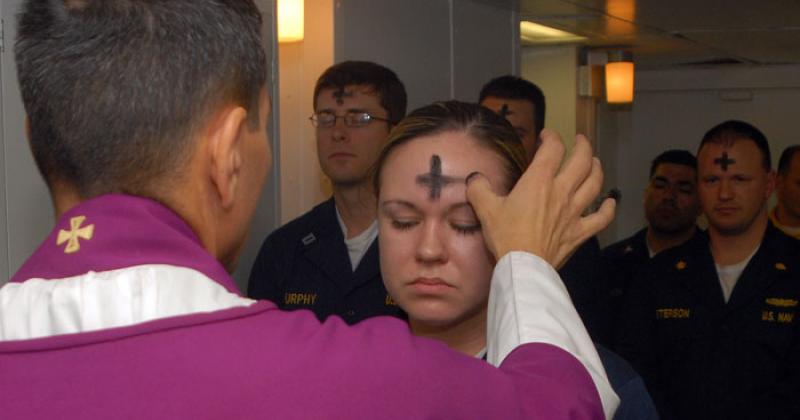Here are nine things to know and share...
1. What is Ash Wednesday?
Ash Wednesday is the day that Lent begins (see: 9 things you need to know about Lent).
The name comes from the fact that a particular rite is always celebrated on this Wednesday in which the faithful have ashes put on their foreheads.
According to the Roman Missal:
In the course of today’s Mass, ashes are blessed and distributed.
These are made from the olive branches or branches of other trees that were blessed the previous year [on Palm/Passion Sunday].
2. What does the putting on of ashes symbolize?
According to the Directory on Popular Piety and the Liturgy:
125. In the Roman Rite, the beginning of the forty days of penance is marked with the austere symbol of ashes which are used in the Liturgy of Ash Wednesday.
The use of ashes is a survival from an ancient rite according to which converted sinners submitted themselves to canonical penance.
The act of putting on ashes symbolizes fragility and mortality, and the need to be redeemed by the mercy of God.
Far from being a merely external act, the Church has retained the use of ashes to symbolize that attitude of internal penance to which all the baptized are called during Lent.
The faithful who come to receive ashes should be assisted in perceiving the implicit internal significance of this act, which disposes them towards conversion and renewed Easter commitment.
3. How does the distribution of ashes take place?
The Roman Missal states that after the homily, the priest blesses the ashes and sprinkles them with holy water.
Then the priest places ashes on the head of all those present who come to him, and says to each one:
Repent, and believe the Gospel.
Or:
Remember that you are dust, and to dust you shall return.
Meanwhile an antiphon or another appropriate chant is sung.
4. Is there a particular way the ashes should be put on people’s heads?
Fr. Edward McNamara, professor of liturgy at Regina Apostolorum University comments:
There are no set rules regarding this, and it largely depends on local custom.
In most English-speaking countries the prevailing custom seems to be that the priest places enough holy water into the ashes to form a kind of paste. The ashes are then daubed in the form of a cross on the forehead.
Many Catholics see this practice as a means of publicly showing their faith and leave the smudge on their forehead throughout Ash Wednesday.
In other countries, such as Spain, Italy and parts of Latin America, the prevailing custom seems to be sprinkling fairly dry ashes on the crown of the head. But even within these geographical areas, both customs are practiced and there may be other legitimate traditions as well.
5. Can this be done outside of Mass?
Yes. The Roman Missal states:
The blessing and distribution of ashes may also take place outside Mass. In this case, the rite is preceded by a Liturgy of the Word, with the Entrance Antiphon, the Collect, and the readings with their chants as at Mass.
Then there follow the Homily and the blessing and distribution of ashes.
The rite is concluded with the Universal Prayer, the Blessing, and the Dismissal of the Faithful.
6. Can someone other than a priest distribute the ashes?
Yes. The Book of Blessings (1659) states:
This rite may be celebrated by a priest or deacon who may be assisted by lay ministers in the distribution of ashes. The blessing of the ashes, however, is reserved to a priest or deacon.
7. How long do you leave the ashes on?
There is no rule about this. It is a matter of personal decision based on the individual’s own inclinations and circumstances.
The ashes can be left on until they wear off naturally or they can be washed off or wiped off when the individual chooses.
8. Can ashes be distributed to the sick who cannot attend Mass?
Yes. The Book of Blessings states:
1657 This order [in the Book of Blessings] may also be used when ashes are brought to the sick. According to circumstancs, the rite may be abbreviated by the minister. Nevertheless, at least one Scripture reading should be included in the service.
1658 If already blessed ashes are brought to the sick, the blessing is omitted and the distribution takes place immediately after the homily. The homily should conclude by inviting the sick person to prepare himself or herself for the reception of the ashes.
9. Is Ash Wednesday a Holyday of Obligation?
No. There is no obligation to attend Mass.
However, Ash Wednesday is a penitential day and it (together with Good Friday) is one of two days of the year on which fasting and abstinence are required.
See here for more on the discipline of fasting and see here for more on the discipline of abstinence.
